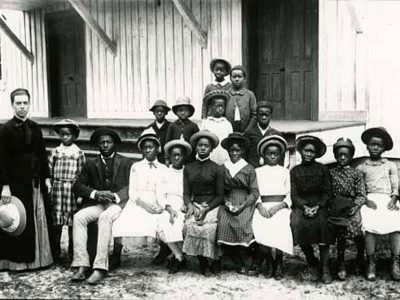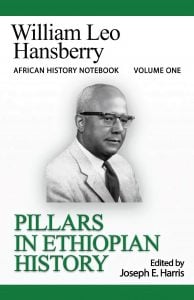“Critical Race Theory” Used by Right Wing to Censure Education and Discourse
Racist thought police seek through legislation and public comments to deny the actual history of the United States and the world.

All Global Research articles can be read in 51 languages by activating the “Translate Website” drop down menu on the top banner of our home page (Desktop version).
Visit and follow us on Instagram at @crg_globalresearch.
***
An exchange between the United States Chairman of the Joint Chiefs of Staff, Gen. Mark Milley, and several Republican Congressmen in Washington, D.C. on June 23, illustrates the level of hysteria prevalent among ruling circles as it relates to what can and cannot be taught within educational institutions including the military.
Gen. Milley was questioned about a “diversity training” program within the military which utilized reading materials that some members of Congress strongly object.
This questioning of Milley took place within the context of attempts by the Pentagon to supposedly uncover “extremists” within its ranks who are harboring racist right-wing views. Some members of Congress are even calling for a cutback in funding to the Pentagon claiming that conservatives are being targeted and accused of racism and neo-fascism.
The top U.S. military general said in response to the questioning, that:
“I’ve read Karl Marx. I’ve read Lenin. That doesn’t make me a communist. What is wrong with understanding, having some situational understanding about the country for which we are here to defend? And I personally find it offensive that we are accusing the United States military, our general officers, our commissioned, our noncommissioned officers, of being ‘woke.'” (See this)
Of course, Gen. Milley is by no means a proponent of anti-racist education. The reasoning of the Pentagon is related to the need for some form of cohesion within the ranks of the various divisions of the military forces. Events in recent months, particularly the right-wing mob attack on Capitol Hill on January 6, could easily prefigure a split within the security apparatus of the U.S. Such divisions which undoubtedly exist between white soldiers and their counterparts from the oppressed communities, would hamper the operational capacity of the Pentagon to engage in combat internationally as well as domestically.
Among the ranks of those involved in the Capitol Hill attack on January 6 were veterans of the military. Milley also said before Congress: “I want to understand white rage, and I’m white. And I want to understand it.”
Earlier Secretary of Defense Lloyd Austin, who is an African American career military officer, was questioned on the same topic by conservative lawmakers. Austin disassociated the Pentagon and its training academies from what is being referred to as “critical race theory.”
Austin emphasized before Congress:
“We do not teach critical race theory. We don’t embrace critical race theory and I think that’s a spurious conversation. We are focused on extremist behaviors, and not ideology.”
These discussions are taking place across the length and breath of the U.S. In several states, legislative bodies are debating and approving bills which ostensibly ban the teaching of “critical race theory.” In Oklahoma, the governor was asked to leave a state commission on the Tulsa Race Massacre of a century ago after he signed into law a bill which prohibits teaching about the realities of the U.S. being a racist society, born in the forced removal and genocide of Native Americans, and the centuries-long enslavement and national oppression of African Americans.
The U.S. military are the guardians of this racist, capitalist and imperialist system which has extended its tentacles around the globe. Their ability to function as a fighting force necessitates a common viewpoint about who their adversaries are and what needs to be done from an imperialist perspective.
This holds true for U.S. society as a whole in regard to the nature and character of the educational system. To demonize the study and analysis of the actual history and social development of the country can only foster more tensions between the races.
Defining “Critical Race Theory” and Its Origins
What is interesting in the discourse about “Critical Race Theory” is the inability of the right-wing critics to define what they are against. Judging from their public pronouncements and legislative actions, it becomes quite obvious that it does not matter what “Critical Race Theory” is and why it came about in the U.S.
As a field of academic study, the plight of African people in the U.S. and around the world has always been controversial as far as the ruling class is concerned. The fact that education itself was systematically denied to enslaved Africans is a strong indication of the politics of knowledge acquisition and production.
An entry in the online Encyclopedia Britannica describes this school of thought as:
“[Critical race theory (CRT), [is an] intellectual movement and loosely organized framework of legal analysis based on the premise that race is not a natural, biologically grounded feature of physically distinct subgroups of human beings but a socially constructed (culturally invented) category that is used to oppress and exploit people of color. Critical race theorists hold that the law and legal institutions in the United States are inherently racist insofar as they function to create and maintain social, economic, and political inequalities between whites and nonwhites, especially African Americans.”
If this definition is accepted in part or in its entirety, then the dominant approach of most African world scholars since the 18th and 19th centuries would fall under this category. The early narratives written by enslaved Africans such as Frederick Douglass were sharp indictments against racist exploitation and its social consequences.
African American women writers and public figures such as Maria Stewart, Mary Ann Shadd, Francis Watkins Harper, Ida B. Wells-Barnett and Anna Julia Cooper, among others, during the 19th and 20th centuries, published books, newspapers, pamphlets and speeches which served to raise the consciousness of African people. A censorship regime in denial about institutional racism and national oppression, would not allow the works of these pioneers in Africana Studies and mass organizing to be read within the public school system.
During the 20th century, books by scholars such as W.E.B. Du Bois, William Leo Hansberry and Drusilla Dunjee Houston laid the foundations for the African and Black Studies programs which emerged during and after the 1960s. Similarly, as in the 21st century, these scholars were subjected to political attacks by the ruling interests of the time period.
Du Bois, a Harvard graduate with a doctoral degree in History awarded in 1896, was never invited to teach or lecture at the private institution. After being labelled a troublemaker and later communist, his name and works were generally ignored within higher education.
Hansberry, also a Harvard graduate, was unable to acquire a Ph.D in African Studies in the 1920s and 1930s due to the fact that not one university in the U.S. had anyone that could supervise his dissertation. Efforts were made to have him removed from the same African Studies program he created at Howard University, the first in the U.S. Later in life, Hansberry’s contributions were recognized when a former student of his, Dr. Nnamdi Azikiwe, the first president of the Federal Republic of Nigeria, invited him to establish an African Studies program at a leading institution in that West African state.
Houston worked as a journalist and publisher in Oklahoma and other states during the early 20th century. Her prodigious research on African history in the eastern region and West Asia remains a source of discussion today.
Education as an Arena of Struggle
Almost all of the Black, Latinx, Asian and Gender Studies programs at universities and colleges around the U.S. emerged as a result of mass demonstrations during the 1960s, 1970s and beyond. These programs and hiring of staff and faculty from African American and other oppressed communities were the products of political pressure exerted by student and community organizations.
African Americans in several former Confederate states created the framework for public education during the 1860s and 1870s. One source on the history of Georgia noted:
“Before the Civil War (1861-65), Georgia had no system of public education. Its school tax assisted poor white children with tuition at private schools. In 1870 the state made its first effort to create public schools and found that, in the Black community at least, the rudiments of such a system were already in place. Reconstruction-era legislation required segregated schools and allowed discrimination in the distribution of school funds to white and Black schools.” (See this)
Therefore, recent and long past events suggest that the attempts to outlaw the teaching of African American, Latinx, Asian, Native Indigenous and working class histories which are rooted in the experiences of these peoples, will prompt the continuation of the struggle against racism in all its forms.
*
Note to readers: Please click the share buttons above or below. Follow us on Instagram, @crg_globalresearch. Forward this article to your email lists. Crosspost on your blog site, internet forums. etc.
Abayomi Azikiwe is the editor of Pan-African News Wire. He is a frequent contributor to Global Research.
Featured image: Georgia African Americans obtain education during the 1890s (Georgia Historical Society)


